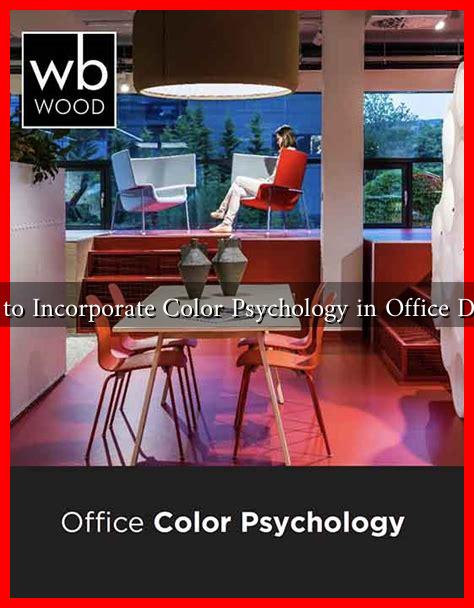-
Table of Contents
- How to Incorporate Color Psychology in Office Design
- The Importance of Color in the Workplace
- Understanding Color Psychology
- Practical Tips for Incorporating Color Psychology in Office Design
- 1. Define Your Office’s Purpose
- 2. Use Color Accents Wisely
- 3. Consider Natural Light
- 4. Gather Employee Input
- Case Studies: Successful Color Implementation
- Conclusion
How to Incorporate Color Psychology in Office Design
Color psychology is a fascinating field that explores how colors influence human behavior, emotions, and perceptions. In the context of office design, understanding color psychology can significantly enhance employee productivity, creativity, and overall well-being. This article delves into how to effectively incorporate color psychology into office design, providing insights, examples, and practical tips.
The Importance of Color in the Workplace
Colors can evoke specific feelings and reactions, making them a powerful tool in office design. Research indicates that the right color choices can lead to improved mood, increased productivity, and even better collaboration among team members. According to a study by the University of Texas, color can increase brand recognition by up to 80%, highlighting its importance not just in branding but also in creating an engaging work environment.
Understanding Color Psychology
Before diving into practical applications, it’s essential to understand the psychological effects of different colors:
- Blue: Often associated with calmness and stability, blue can enhance focus and productivity. It’s an excellent choice for offices where concentration is key.
- Green: Symbolizing nature and tranquility, green can reduce anxiety and promote a sense of balance. It’s ideal for creative spaces or areas where employees need to recharge.
- Yellow: A color that stimulates optimism and creativity, yellow can inspire innovative thinking. However, it should be used sparingly, as too much yellow can lead to frustration.
- Red: This color evokes strong emotions and can increase energy levels. It’s best used in moderation, perhaps in areas designed for brainstorming or high-energy activities.
- Gray: While neutral and sophisticated, gray can sometimes evoke feelings of sadness or dullness. It’s best used as an accent color rather than the primary hue.
Practical Tips for Incorporating Color Psychology in Office Design
Now that we understand the psychological implications of colors, let’s explore how to incorporate them into office design effectively:
1. Define Your Office’s Purpose
Before selecting colors, consider the primary functions of your office space. Different areas may require different color schemes:
- Collaborative Spaces: Use vibrant colors like yellow or orange to stimulate creativity and teamwork.
- Focus Areas: Opt for calming colors like blue or green to enhance concentration.
- Break Rooms: Incorporate warm colors to create a welcoming and relaxing environment.
2. Use Color Accents Wisely
While it’s tempting to paint entire walls in bold colors, it’s often more effective to use color accents. This can be achieved through:
- Artwork and wall decor
- Furniture and accessories
- Accent walls in meeting rooms or lounges
For example, a tech company might choose a sleek gray for the main office but add vibrant orange chairs in collaborative spaces to spark creativity.
3. Consider Natural Light
The amount of natural light in your office can significantly affect how colors are perceived. Bright colors may appear more vibrant in well-lit spaces, while darker colors can make a room feel smaller and more enclosed. Always test paint samples in the actual office environment before making a final decision.
4. Gather Employee Input
Involving employees in the design process can lead to a more harmonious workspace. Conduct surveys or workshops to gather feedback on color preferences and how they feel about different color schemes. This not only fosters a sense of ownership but also ensures that the chosen colors resonate with the team.
Case Studies: Successful Color Implementation
Several companies have successfully integrated color psychology into their office designs:
- Google: Known for its vibrant and playful office spaces, Google uses a variety of colors to stimulate creativity and collaboration among employees.
- Airbnb: Their offices feature warm colors and natural elements, promoting a sense of comfort and community.
- Facebook: The use of blue throughout their offices reflects the brand’s identity while also creating a calming atmosphere.
Conclusion
Incorporating color psychology into office design is not just about aesthetics; it’s about creating an environment that enhances productivity, creativity, and employee satisfaction. By understanding the psychological effects of colors and applying them thoughtfully, businesses can foster a more engaging and effective workplace. Remember to define the purpose of each space, use color accents wisely, consider natural light, and involve employees in the design process. With these strategies, you can create an office that not only looks good but also feels good to work in.
For more insights on office design and color psychology, you can explore resources like Color Psychology.

